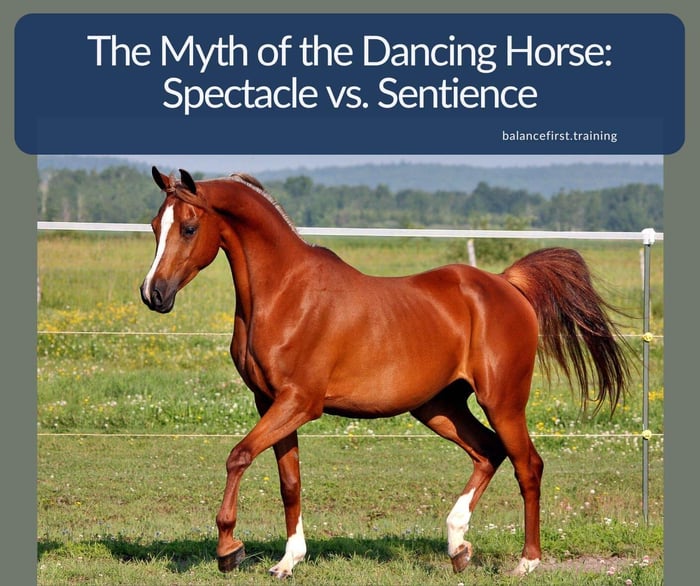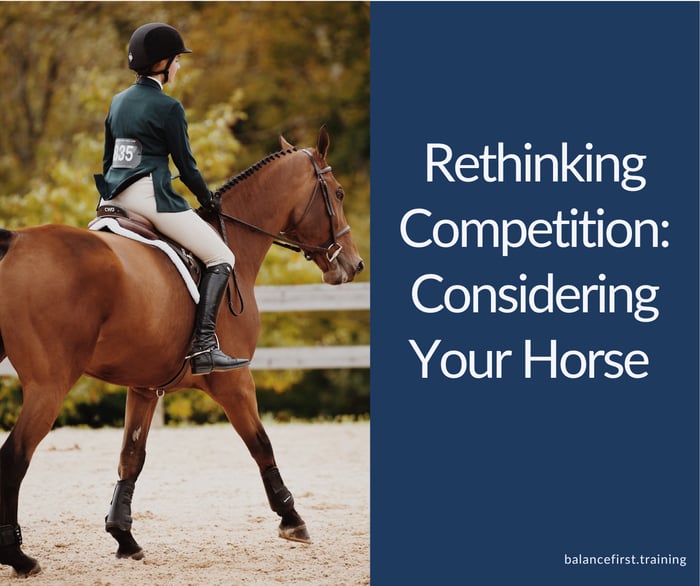Natural asymmetry in your horse can cause a whole lot of problems, both physical and behavioural.
Does your horse:
- Find it easier to go to the left or to the right on a circle?
- Lean on the reins or avoid the contact?
- Go too fast and run or buck, or is he too slow, so you always have to push him on?
- Go with his head in the air and a hollow back when you ride him?
- Push the saddle to one side?
- Always take the same canter lead?
- Become tense when ridden?
- Go lame when ridden?
It's perfectly normal! Your horse is simply out of balance.This is not a problem for the horse in nature. In fact, having a dominant front leg and pushing back legs can be helpful when you need to move fast to get out of the way of predators. But when you add the weight of a rider, the imbalance can cause pain, lameness and emotional problems.
If you are experiencing some of these challenges, learning to recognise and correct the natural asymmetry in your horse will make a huge difference. The Balance First exercises can help by providing a logical and progressive system of exercises which will develop the horse symmetrically and help him find balance, suppleness, straightness and self-carriage.
The first step is to learn to recognise your horse’s natural asymmetry and to understand how it affects his movement.
Some of the most easily recognised types of natural asymmetry in your horse
The front legs, with their fragile bones, are not designed for taking the weight of a rider. The back legs are much stronger with big muscles, heavy bones and joints that act like springs.
Front legs
Just like humans, horses are right or left-handed in their front legs. The dominant leg tends to be stronger and better coordinated and, if he is not taught to move in balance, the horse will tend to put more weight on the dominant front leg. This can cause problems like navicular disease or sprain injuries.
To find out whether your horse is right or left-handed in front, notice which leg he usually chooses to put the most weight on when at rest. When he is in the field grazing, his preferred leg will probably be the leg that he points forwards the most frequently.
Another good test is:
- Place some food about 5 m (15 feet) in front of your horse.
- Encourage your horse to come forward to eat the food.
- When your horse begins to eat the food, note whether the left or right hoof is placed furthest forward.
- Do this 5 more times.
Your result:
- If your horse places the left foot forward most of the time, he is likely to be left-handed.
- If your horse places the right foot forward most of the time, he is likely to be right-handed.
- If the outcome is 50-50, it could be that your horse has no preference and is ambidextrous.
Back legs
Horses are also left or right-handed in the hind legs. They will have one pushing hind leg and one carrying hind leg.
Did you ride a scooter as a child? Without thinking about it, most people put the same foot on the scooter every time, and that is their carrying leg. Then they use the other leg, their pushing leg, to push back to make the scooter move forward.
The principle is the same for the horse. A strong carrying hind leg bends easily like a spring, steps under the horse and carries weight. A pushing hind leg is weaker and straighter and pushes backwards.
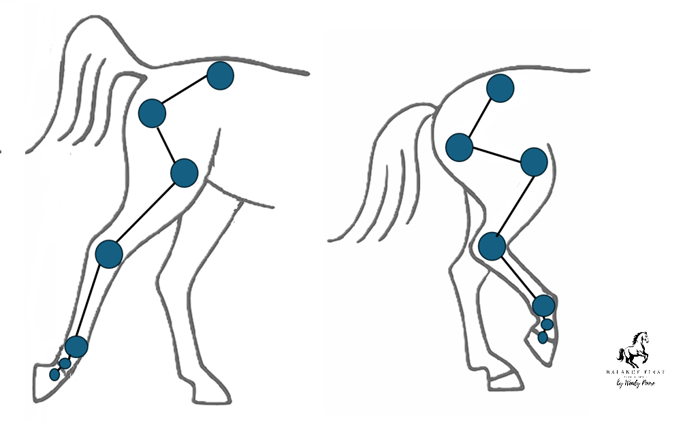
Lateral bending
The spine can bend to the left or to the right from the head to the tail.
From birth, almost all horses either bend more easily to the left or to the right, and a horse can be right-bent or left-bent.
For a left-bent horse:
- The long back muscles on the right will be weak but supple and will stretch easily
- The long back muscles on the left will be short, stiff and strong
Some of the signs of a left-bent horse are:
- Easier to ride on a circle to the left
- On a circle to the left tends to over-bend to the left and fall out through the outside shoulder
- On a circle to the left wants make the circle bigger
- On a circle to the right tends to fall in on the inside shoulder
- On a circle to the right wants to make the circle smaller
- The saddle tends to slip to the right because the muscles are weaker on that side
- The stirrup on the right tends to hang lower
For right-bent horses, it is the opposite.
Left-bent horses tend to be right-handed in front, and right-bent horses tend to be left-handed in front.
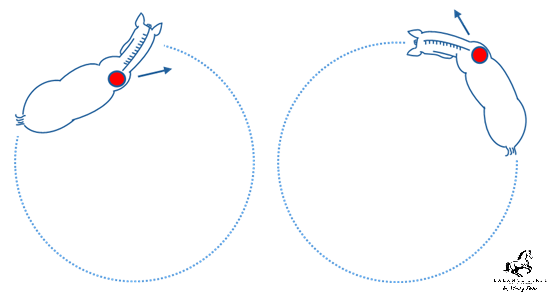
A right-handed left-bent horse falls through the outside shoulder on a circle to the left and falls through the inside shoulder on a circle to the right.
Case study
Left-bent, right-handed
When I started training Moon, he was very stiff in his body because he was strongly right-handed and left-bent. This meant that when I asked him to lower his head and neck forward down and bend to the right, it was very difficult for him. A circle to the right was much more difficult than to the left because he wanted to fall on his right shoulder. He would rush and fall forward, getting faster and faster, and he would trip often. When I was able to control the point of mass and move it back and out of his right shoulder, he was able to bend and carry himself in balance.
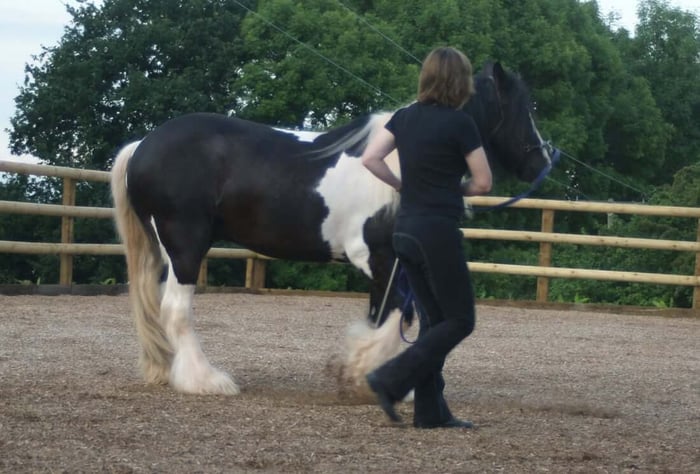
Moon on the more difficult right rein. Left-bent and right-handed and falling in to me onto his favoured right shoulder. Notice the unhappy facial expression and hollow back.  Moon’s natural asymmetry causes him to lean to the inside of the circle, like a motorbike, and to speed up. This is called vertical imbalance.
Moon’s natural asymmetry causes him to lean to the inside of the circle, like a motorbike, and to speed up. This is called vertical imbalance. This is better. Here Moon bends around me on the circle. He steps under with his inside hind, his shoulder is more upright and he has a forward and down tendency of the head and neck.
This is better. Here Moon bends around me on the circle. He steps under with his inside hind, his shoulder is more upright and he has a forward and down tendency of the head and neck.  Moon finds his balance with a little bit of collection in the trot.
Moon finds his balance with a little bit of collection in the trot.
Addressing the physical natural asymmetry in your horse is vital, but it is so important to also work on the mental, emotional and spiritual areas of imbalance. Very often, correcting the physical imbalance will help with the mental and emotional areas but it can also work the other way around. With this in mind, we must provide a tailor-made solution for every horse.

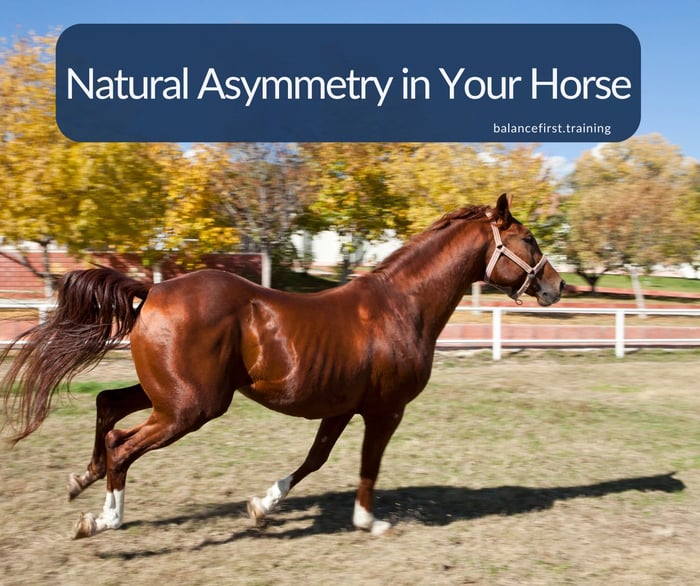
.JPG)

